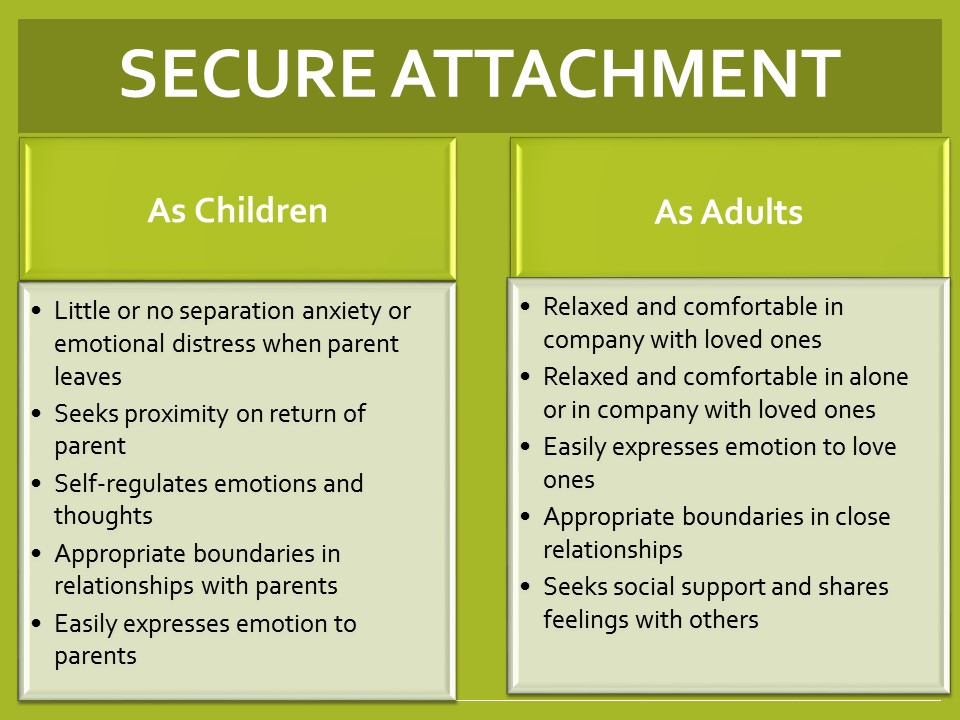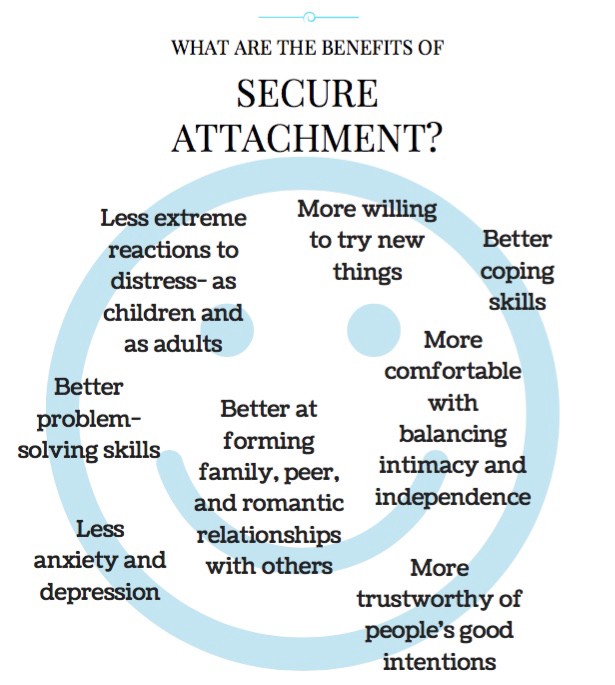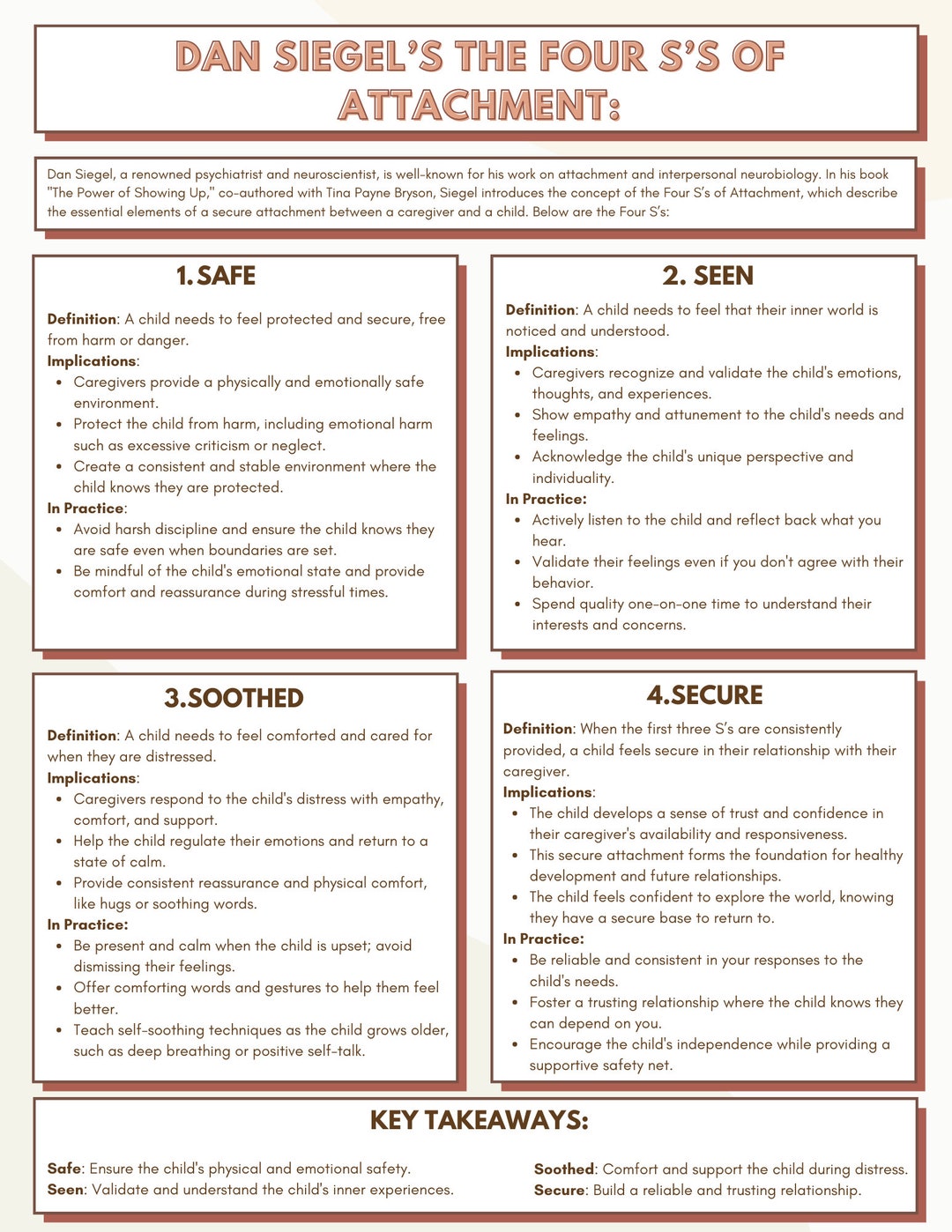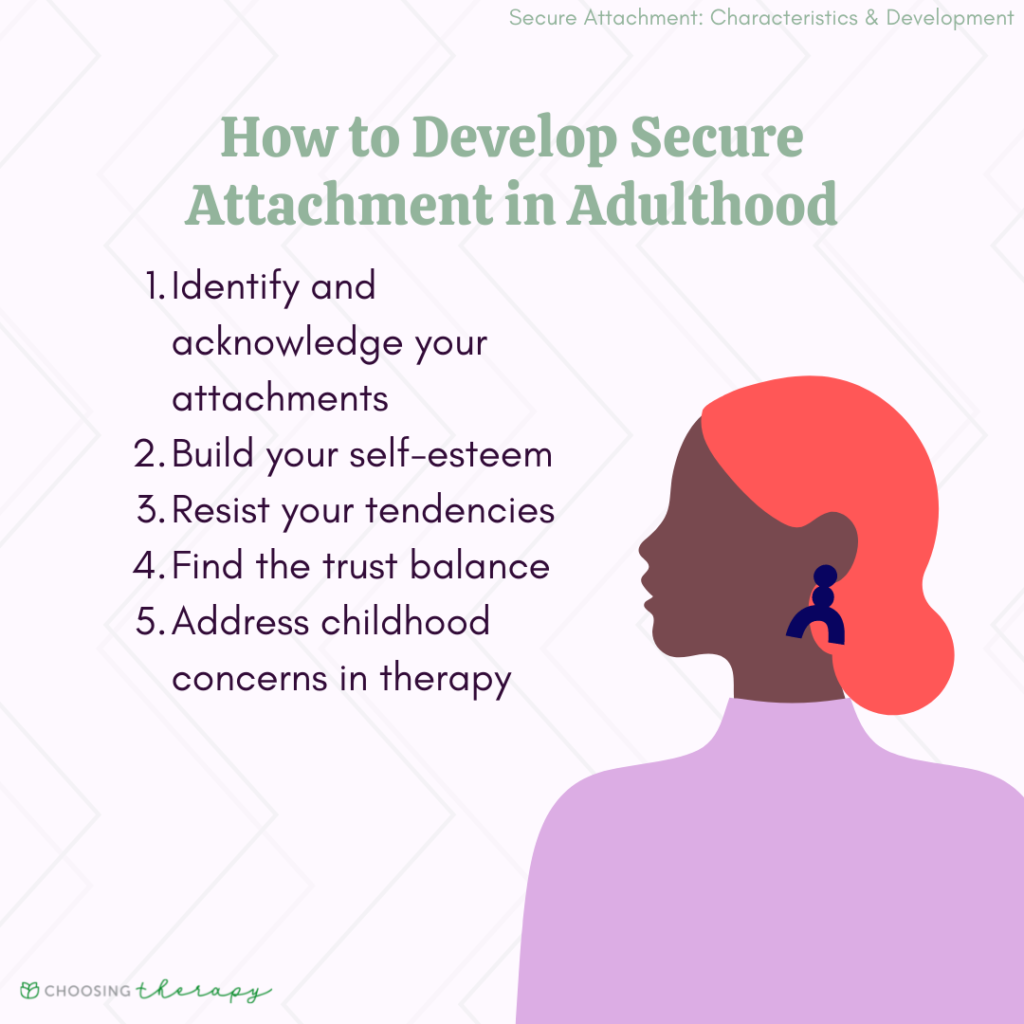What Is Considered The Hallmark Of Secure Attachment

In the intricate landscape of human relationships, the concept of secure attachment stands out as a cornerstone of emotional well-being and healthy development. But what precisely defines this crucial bond, and how can we recognize it in ourselves and others?
Understanding the hallmarks of secure attachment is not merely an academic exercise; it has profound implications for our personal lives, influencing everything from our romantic relationships to our ability to cope with stress. Experts agree that secure attachment, cultivated in early childhood, provides a robust foundation for navigating the complexities of life.
The Core of Secure Attachment
At its heart, secure attachment is characterized by a sense of safety, trust, and responsiveness in relationships. It’s built upon consistent and attuned caregiving, allowing individuals to develop confidence in their own worth and the reliability of others.
According to leading attachment theorist, John Bowlby, secure attachment arises when a child experiences a caregiver as a secure base from which to explore the world. This secure base provides comfort and reassurance when the child feels threatened or distressed.
Mary Main, another prominent researcher, further elaborated on the concept of secure attachment, emphasizing the importance of parental reflective functioning - the ability to understand and respond to a child's mental state.
Key Characteristics: The 'Circle of Security'
Several observable behaviors and internal states differentiate secure attachment from other attachment styles. These characteristics often manifest as a "circle of security," where individuals feel comfortable exploring their environment, knowing they can return to their attachment figure for support when needed.
One of the primary hallmarks is the ability to seek comfort from others when distressed. This doesn't signify weakness but rather an understanding that relying on supportive relationships is a healthy coping mechanism.
Equally important is the capacity to provide comfort and support to others. Securely attached individuals are generally empathetic and attuned to the needs of those around them.
A key indicator is also the ability to express emotions openly and honestly. They are less likely to suppress feelings or engage in avoidant behaviors.
Furthermore, a securely attached individual demonstrates a general sense of self-worth and optimism. This stems from consistent positive interactions with caregivers early in life.
Attachment in Adulthood
While often discussed in the context of parent-child relationships, secure attachment continues to shape our adult interactions. It influences our romantic partnerships, friendships, and even our professional lives.
In romantic relationships, securely attached individuals are more likely to experience intimacy, trust, and commitment. They are able to maintain healthy boundaries and resolve conflicts constructively.
According to relationship expert, Dr. Sue Johnson, secure attachment is the foundation for building lasting love. Her Emotionally Focused Therapy (EFT) emphasizes the importance of creating secure attachment bonds in couples therapy.
Individuals with secure attachment histories tend to form more supportive friendships. They are able to build strong social networks and effectively navigate interpersonal challenges.
Impact on Society
The benefits of secure attachment extend beyond individual relationships, influencing broader social dynamics. Studies have shown that secure attachment is associated with increased empathy, pro-social behavior, and resilience in the face of adversity.
Communities with a higher prevalence of secure attachment are generally more collaborative and supportive. These environments foster a sense of belonging and mutual responsibility.
Conversely, insecure attachment patterns can contribute to social problems such as aggression, substance abuse, and mental health disorders. Addressing attachment-related issues is therefore crucial for promoting individual and collective well-being.
Cultivating Secure Attachment
It is important to note that attachment styles are not necessarily fixed. Although early experiences play a significant role, individuals can cultivate secure attachment patterns through therapy, mindful self-reflection, and healthy relationship experiences.
Therapies such as Attachment-Based Therapy and EFT can help individuals address unresolved attachment issues. They can learn to form more secure and fulfilling relationships.
By understanding the hallmarks of secure attachment, we can consciously work towards creating environments that foster safety, trust, and responsiveness in our relationships. This allows ourselves, and future generations, to thrive.
In conclusion, the hallmark of secure attachment lies in the ability to form healthy, trusting relationships characterized by mutual support, open communication, and a secure sense of self. Recognizing and fostering these qualities can lead to happier, more fulfilling lives for individuals and a more compassionate and resilient society as a whole.


















